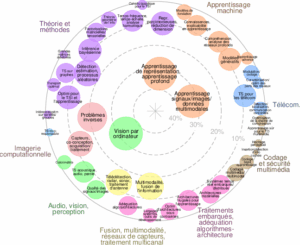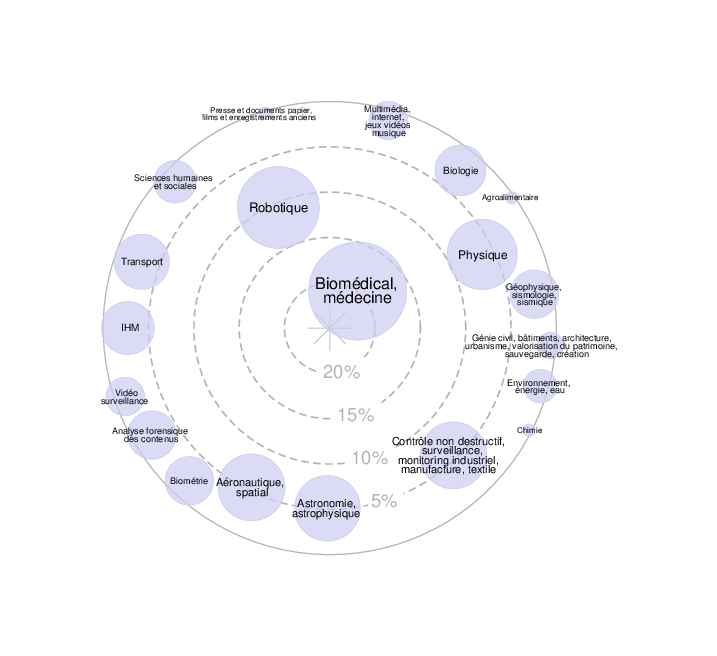Postdoctoral position
The aim of this postdoctoral research project is to develop deep learning models that integrate causal and correlation relationships, focusing on enhancing the explainability of AI systems. This research project could also be expanded to explore the application of diffusion-based generative models within the context of explainable AI. Furthermore, the proposed framework could be applied to manipulation control in robotics, where diffusion-based models could enhance the simulation and control of robot actions by generating realistic, physically consistent data for training deep learning models.
1. Context and main aims
The aim of this postdoctoral research project is to develop deep learning models that integrate causal and correlation relationships, focusing on enhancing the explainability of AI systems. The research will tackle three main objectives:
- Incorporating Physical Laws into Deep Learning Models: The first objective is to introduce physical laws, expressed as partial differential equations (PDEs), or other prior statistical knowledge, into deep learning models. This will involve customizing loss functions to respect physical laws or statistical phenomena, designing neural network models or algorithmic architectures that align with physical processes, thereby improving model transparency and interpretability.
- Optimal Transport Theory in Model Construction: The second focus is the exploration of intelligent models based on optimal transport theory. Optimal transport, by defining a transport cost function, effectively unifies causal and statistical relationships. This provides powerful tools for investigating the explainability of deep learning models.
- Representation Methods for Singular Boundaries and Topological Structures: The final component aims at developing representation methods that preserve singular boundaries and topological structures. These advancements will enhance the deep learning models’ ability to abstract and comprehend data features, offering interpretable and controllable representation methods for downstream decision-making or generation tasks.
This research project could also be expanded to explore the application of diffusion-based generative models within the context of explainable AI. Diffusion models, which have shown remarkable success in generating complex data distributions, can be integrated with physical laws and optimal transport theory to model and predict real-world phenomena in a more interpretable way. These models could potentially be used to generate high-quality synthetic data that adheres to physical constraints, facilitating more accurate and transparent decision-making in AI systems.
Furthermore, the proposed framework could be applied to manipulation control in robotics, where diffusion-based models could enhance the simulation and control of robot actions by generating realistic, physically consistent data for training deep learning models. By leveraging the synergy between generative models and optimal transport theory, the project could enable more efficient and interpretable robotic manipulation strategies, leading to better generalization and performance in complex real-world environments.
2. Research strategy and main milestones
- Task 1: Integrating prior knowledge such as physical laws into the loss functions of deep learning models.
- Task 2: Developing architectures based on optimal transport theory to unify statistical and causal relationships in model design.
- Task 3: Exploring advanced representation techniques to capture and preserve singular boundaries and topological data structures.
- Task 4: Conducting studies to validate the interpretability and efficiency of the proposed models on real-world datasets.
The overarching goal is to make deep learning models more transparent and interpretable, ensuring they align with both physical principles and statistical phenomena, while also providing tools to understand their decision-making processes.
3. Skills
Candidates should possess:
- Strong fluency in English or French.
- Proficiency in Python, with experience in deep learning frameworks such as TensorFlow or PyTorch.
- Familiarity with machine learning techniques, including optimal transport theory, and experience with scientific computing.
- A solid understanding of physical modeling and statistical methods is essential.
- Experience with programming in C++ and use of Linux systems is advantageous.
A willingness to engage in collaborative research and contribute to the writing of research proposals is required. The candidate should be motivated to work in a multidisciplinary environment and support the supervision of junior researchers and interns.
4. Duration and Preferred starting date
24 months; January 1st 2025
5. Application
Applications should include a detailed curriculum vitae, brief statements of interests and two reference letters.
Applications and letters should be sent via electronic mail to:
- Pr. Liming Chen ( liming.chen@ec-lyon.fr )





